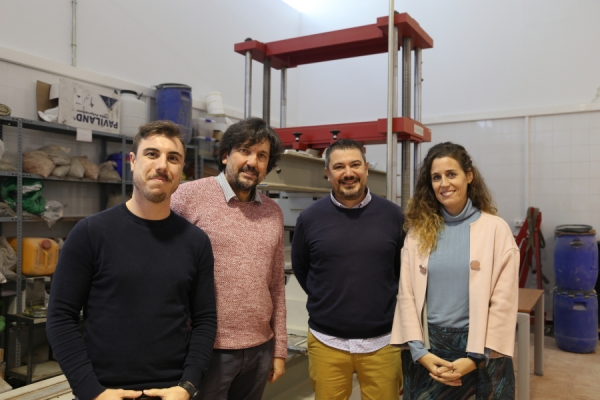A good road needs a good foundation. In their construction it is essential to stabilize soils, which in many areas have a clay-rich base, in order to strengthen them and augment their load-bearing capacity while reducing their plasticity and swelling. Lime is used as a stabilizing material, but its production involves the consumption of natural resources and generates great amounts of CO2 entailing a high environmental cost. Therefore, the search for other stabilization formulas is a challenge for sustainable construction.
Faced with this challenge, the Construction Engineering research group at the University of Cordoba has developed a stabilization technique that reduces the use of lime by 66% and cuts carbon footprints in half using industrial by-products and silica-based nanomaterials. In addition, they have found that this technique improves the technical properties of the soil; the greater the load-bearing capacity, the less the plasticity and swelling.
The process to come up with the optimal blend was painstaking. "We selected four types of waste: two types of ash from the burning of forest biomass, steelmaking slag from steel production, and construction and demolition waste. We conducted a complete analysis of their mechanical and microstructural properties, examined their leaching to verify that the water did not drag the components and pollute aquifers, and quantified environmental improvement in terms of the tons ofCO2 not released into the atmosphere, testing equal sections with each of these materials," explained researcher José Luis Díaz, author of the article together with Julia Rosales, Manuel Cabrera and Francisco Agrela, in the same group.
The novel aspect of the process is that, in addition to these forms of waste, which they had previously studied, a "very small" amount of a silica-based nanomaterial is added. "Adding this material in a very low percentage (0.056%) produced a reaction that formed a kind of gel, very similar to cement, creating a kind of 'impermeable' layer preventing water or heavy materials that could seep from the white steel slag from doing so," continued the researcher Manuel Cabrera: "The idea was to use different percentages to find the specific dosage and determine that sweet spot where the properties and environmental impact are improved, but there are no changes in the material."
The winning combination
The mixture of biomass bottom ash and white steel mill slag (the two by-products that worked best), with 0.5% lime and 0.056% silica-based nanomaterial, was the winning combination when it came to increasing the mechanical properties of the soil and reducing the environmental impact by 50%.
With these recycled materials "we are giving a second life to waste that would otherwise end up in a landfill, and we are also improving the mechanical properties of the road, increasing its firmness and load-bearing capacity," said Julia Rosales "something critical if we take into account that it is used to stabilize the earth on rural roads where there may be more tractor or truck traffic."
This work was part of the ECARYSEproject "on which we worked together with the company SACYR to improve the earth stabilization processes," said the professor and principal investigator of the Francisco Agrela group, who added that "we were able to use this earth stabilization technique on a project that the company had in Villacarrillo."
Reference
Díaz-López, J., Rosales, J., Agrela, F., Cabrera, M., & Cuenca-Moyano, G. (2024). Evaluation of geotechnical, mineralogical and environmental properties of clayey soil stabilized with different industrial by-products: A comparative study. Construction And Building Materials, 449, 138497.


